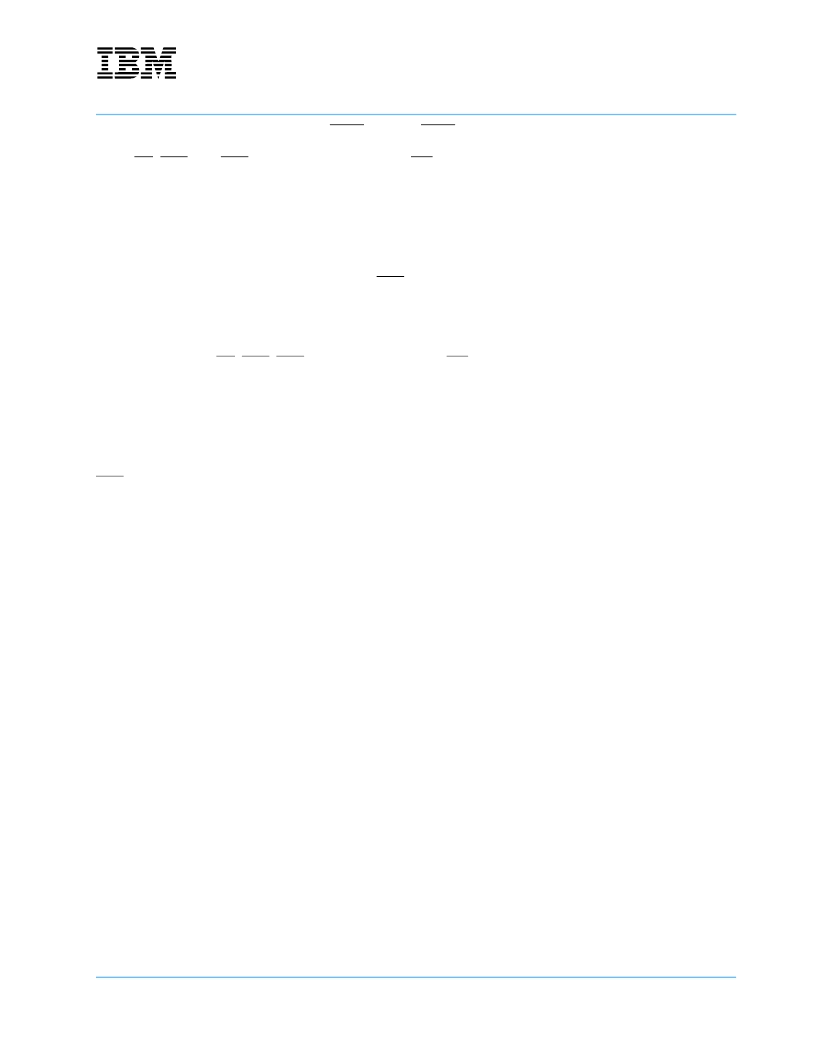- 您現(xiàn)在的位置:買賣IC網(wǎng) > PDF目錄360707 > IBMN364164CT3C-75A x16 SDRAM PDF資料下載
參數(shù)資料
| 型號(hào): | IBMN364164CT3C-75A |
| 英文描述: | x16 SDRAM |
| 中文描述: | x16內(nèi)存 |
| 文件頁數(shù): | 27/71頁 |
| 文件大小: | 1251K |
| 代理商: | IBMN364164CT3C-75A |
第1頁第2頁第3頁第4頁第5頁第6頁第7頁第8頁第9頁第10頁第11頁第12頁第13頁第14頁第15頁第16頁第17頁第18頁第19頁第20頁第21頁第22頁第23頁第24頁第25頁第26頁當(dāng)前第27頁第28頁第29頁第30頁第31頁第32頁第33頁第34頁第35頁第36頁第37頁第38頁第39頁第40頁第41頁第42頁第43頁第44頁第45頁第46頁第47頁第48頁第49頁第50頁第51頁第52頁第53頁第54頁第55頁第56頁第57頁第58頁第59頁第60頁第61頁第62頁第63頁第64頁第65頁第66頁第67頁第68頁第69頁第70頁第71頁

IBMN364164
IBMN364404
IBMN364804
64Mb Synchronous DRAM - Die Revision C
19L3265.E35856B
1/01
IBM Corporation. All rights reserved.
Use is further subject to the provisions at the end of this document.
Page 27 of 71
Automatic Refresh Command (CAS before RAS Refresh)
When CS, RAS, and CAS are held low with CKE and WE high at the rising edge of the clock, the chip enters
the Automatic Refresh mode (CBR). All banks of the SDRAM must be precharged and idle for a minimum of
the Precharge time (t
RP
) before the Auto Refresh Command (CBR) can be applied. An address counter,
internal to the device provides the address during the refresh cycle. No control of the external address pins is
required once this cycle has started.
When the refresh cycle has completed, all banks of the SDRAM will be in the precharged (idle) state. A delay
between the Auto Refresh Command (CBR) and the next Activate Command or subsequent Auto Refresh
Command must be greater than or equal to the RAS cycle time (t
RC
).
Self Refresh Command
The SDRAM device has a built-in timer to accommodate Self Refresh operation. The Self Refresh Command
is defined by having CS, RAS, CAS, and CKE held low with WE high at the rising edge of the clock. All banks
must be idle prior to issuing the Self Refresh Command. Once the command is registered, CKE must be held
low to keep the device in Self Refresh mode. When the SDRAM has entered Self Refresh mode all of the
external control signals, except CKE, are disabled. The clock is internally disabled during Self Refresh Oper-
ation to save power. The user may halt the external clock while the device is in Self Refresh mode, however,
the clock must be restarted before the device can exit Self Refresh operation. Once the clock is cycling, the
device will exit Self Refresh operation after CKE is returned high. A minimum delay time is required when the
device exits Self Refresh Operation and before the next command can be issued. This delay is equal to the
RAS cycle time (t
RC
) plus the Self Refresh exit time (t
SREX
).
相關(guān)PDF資料 |
PDF描述 |
|---|---|
| IBMN364404CT3C-260 | x4 SDRAM |
| IBMN364404CT3C-360 | x4 SDRAM |
| IBMN364404CT3C-75A | x4 SDRAM |
| IBMN364804CT3C-260 | x8 SDRAM |
| IBMN364804CT3C-360 | x8 SDRAM |
相關(guān)代理商/技術(shù)參數(shù) |
參數(shù)描述 |
|---|---|
| IBMPPC403GAJC33C1 | 制造商:IBM 功能描述: |
| IBMPPC750CLGEQ4023 | 制造商:IBM 功能描述:MPU 750CL RISC 32BIT 90NM 400MHZ 1.15V/1.8V 278FCBGA - Trays |
| IBMPPC750CLGEQ5023 | 制造商:IBM Microelectronics 功能描述:MPU 750CL RISC 32BIT 90NM 500MHZ 1.15V/1.8V 278FCBGA - Trays |
| IBMPPC750CLGEQA033 | 制造商:IBM 功能描述:MPU 750CL RISC 32BIT 90NM 1GHZ 1.15V/1.8V 278FCBGA - Trays 制造商:IBM 功能描述:IBMIBMPPC750CLGEQA033 CPU PPC 750CL 1GHZ |
| IBN100 | 制造商:Hubbell Wiring Device-Kellems 功能描述:ICON, BLANK,BR,100PK |
發(fā)布緊急采購(gòu),3分鐘左右您將得到回復(fù)。